
We decided to visit Carcassonne last year. Finding a parking spot wasn’t difficult as most people had already come and gone. Many prefer arriving early, but when we got there around 3 pm, it wasn’t as crowded as it was earlier in the day. Tourists usually spend an hour or two here before heading to other destinations, such as Toulouse, as we did. The parking area had plenty of spaces, so we parked the car and started exploring.


We headed to the entrance, where an old cemetery could be seen nearby, with visible gravestones. The entrance gate is surrounded by large towers and the small windows next to the gate seem like they were once used for archery. And the castle is surrounded by a moat, likely built to make it harder for enemies to approach.




Inside there were plenty of shops, cafés and souvenir stores catering to tourists. Many sold medieval-themed items like armor, swords and bows. However, the overly commercial atmosphere of these streets didn’t appeal to me much. While the ground floors of the houses have been renovated for commercial use, the upper floors still retain their medieval architectural charm.

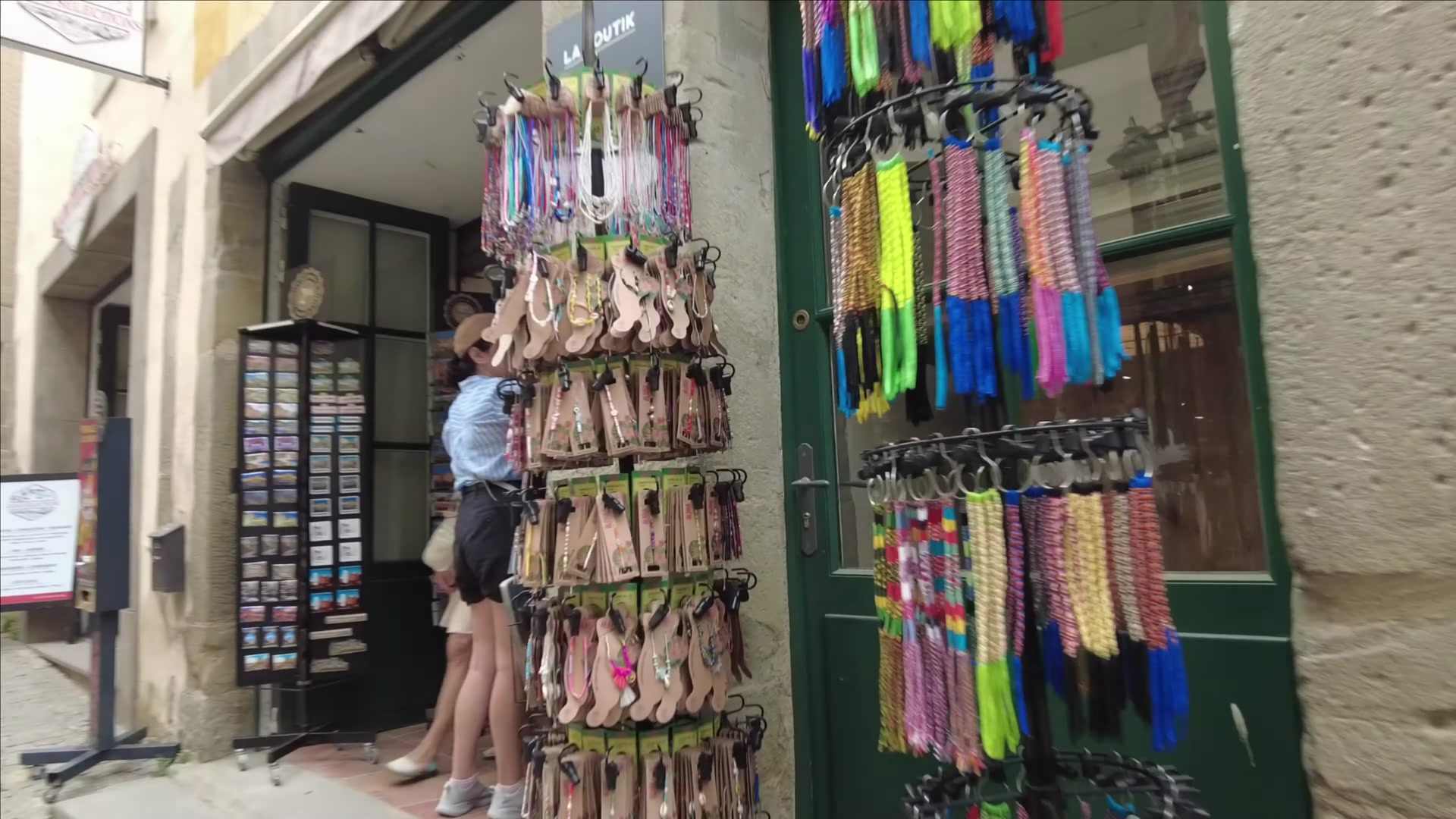
We decided to head straight for the castle and bought tickets to enter. Inside the castle grounds, it wasn’t too crowded, which was fantastic. At first glance, the castle is surrounded by two layers of walls. The first wall protects the castle area, while the second provides a broader layer of defense. The castle buildings, stone structures and old bridges exhibit typical medieval architecture.



One great thing about visiting castles in France is that they allow dogs, just like in the Loire Valley castles and here was no exception. Upon entering, the atmosphere felt entirely different from other castles we had visited. This one stood out. The castle courtyard looked like a space for gatherings or meetings. It was also possible to climb to the upper levels, so we went up the stairs and enjoyed the view.

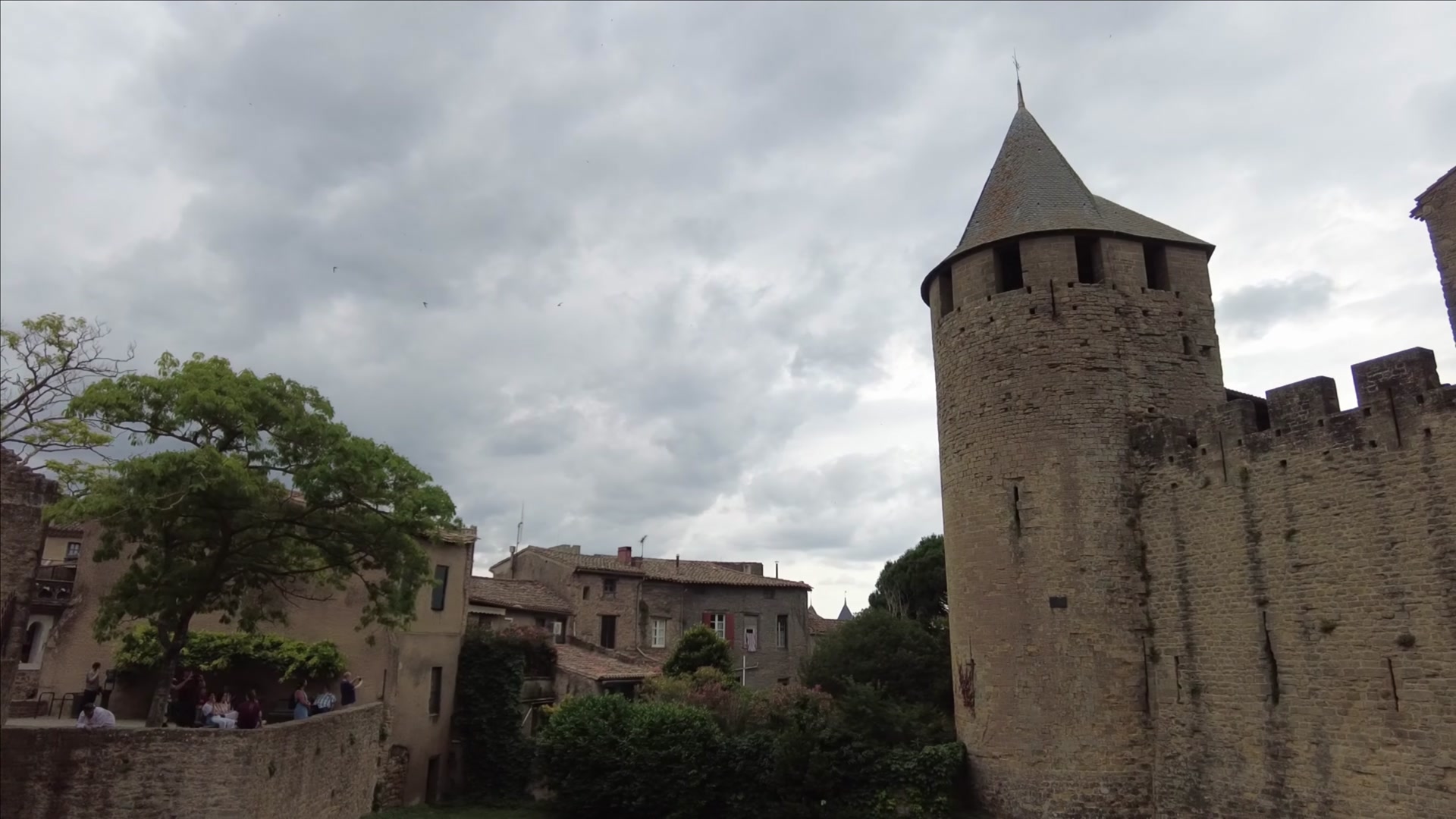




There were displays explaining how the castle developed over time. Initially, only a portion of it was built in the early 10th century and it was later completed in 1226. I think this might be the oldest castle we’ve seen on this trip. One of the other castles we visited dated back to the 11th century, but this one completed in 1226, seems to be even older.

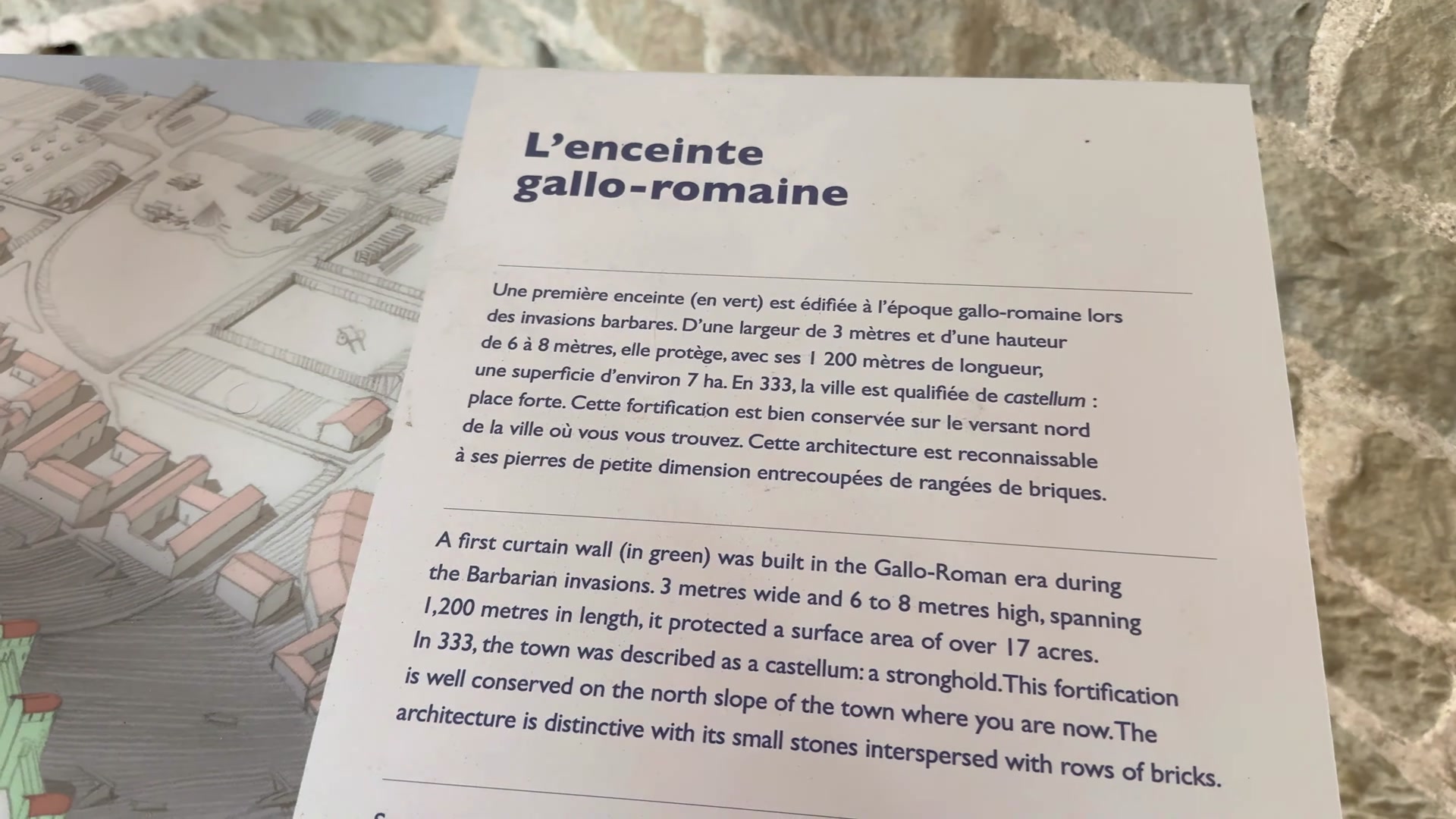
We climbed to the top level, which offered an amazing view. The cityscape below is a mix of modern structures and churches. From there, the second wall of the castle was visible. We had walked around it earlier. We then continued walking along the walls, which were once patrolled by soldiers to monitor the area.





After leaving the inner part of the castle, we found ourselves with the castle behind us. The walls here don’t just surround the castle but encircle the entire city, designed to protect the whole area, not just the fortress. The landscape is lush with plenty of trees and distant mountains in view. Modern aqueducts are also visible in the distance.



According to the information provided, these initial walls were constructed during the Gallo-Roman period to defend against barbarian invasions. They range from 3 to 10 meters in height, span 3 kilometers and enclose an area of 7 hectares. In 333 ad, this region was recognized as a fortified site. Additional walls were later added around the city, making these initial ones incredibly ancient, dating back to 333 ad.
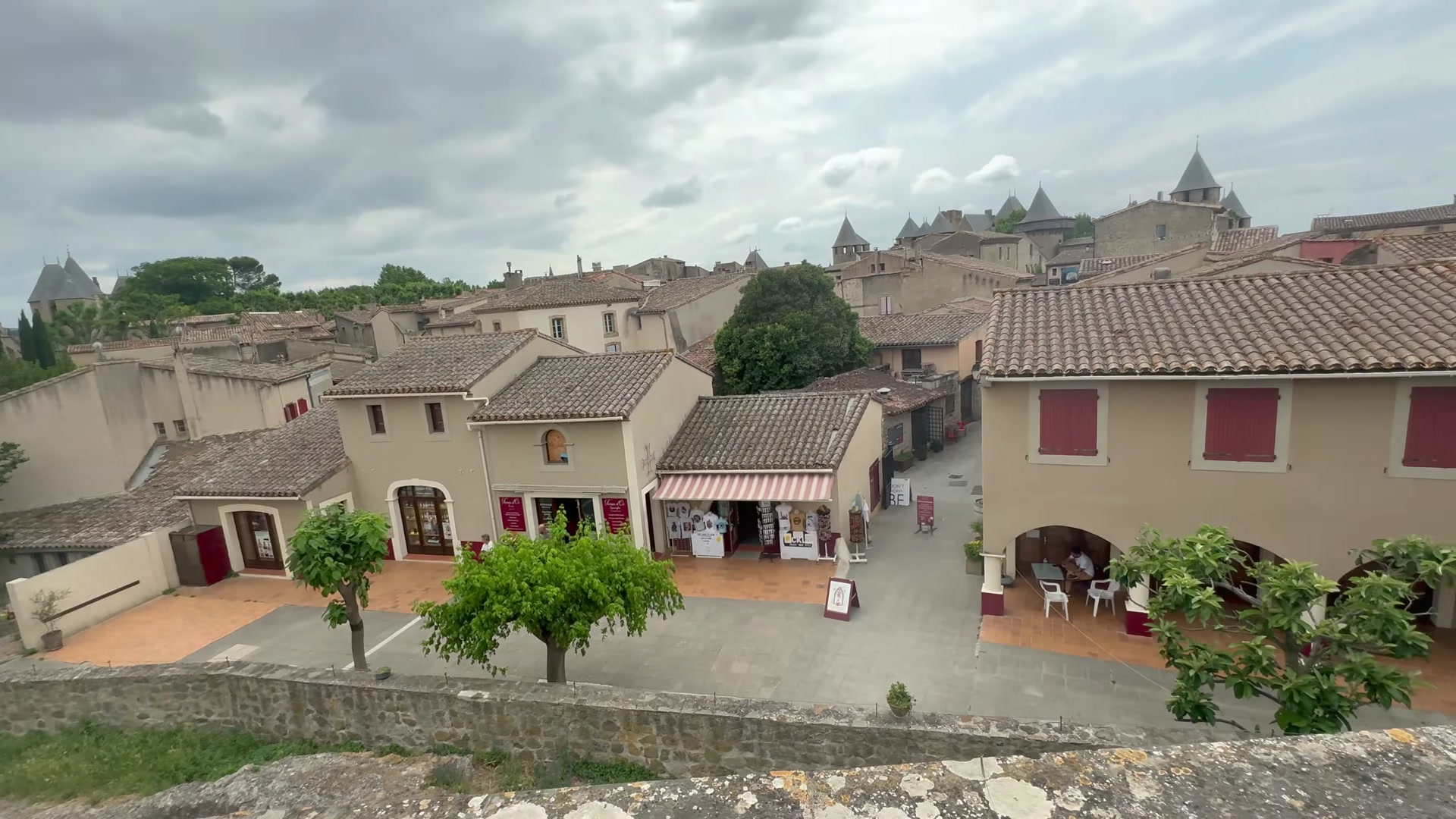
We came across a tower from the Gallo-Roman period, which was quite impressive. It covers an area of 20-30 square meters and its upper floors had archer windows used for defense. There were also platforms for siege weapons like catapults. Unfortunately the upper level has been lost, leaving only remnants behind.
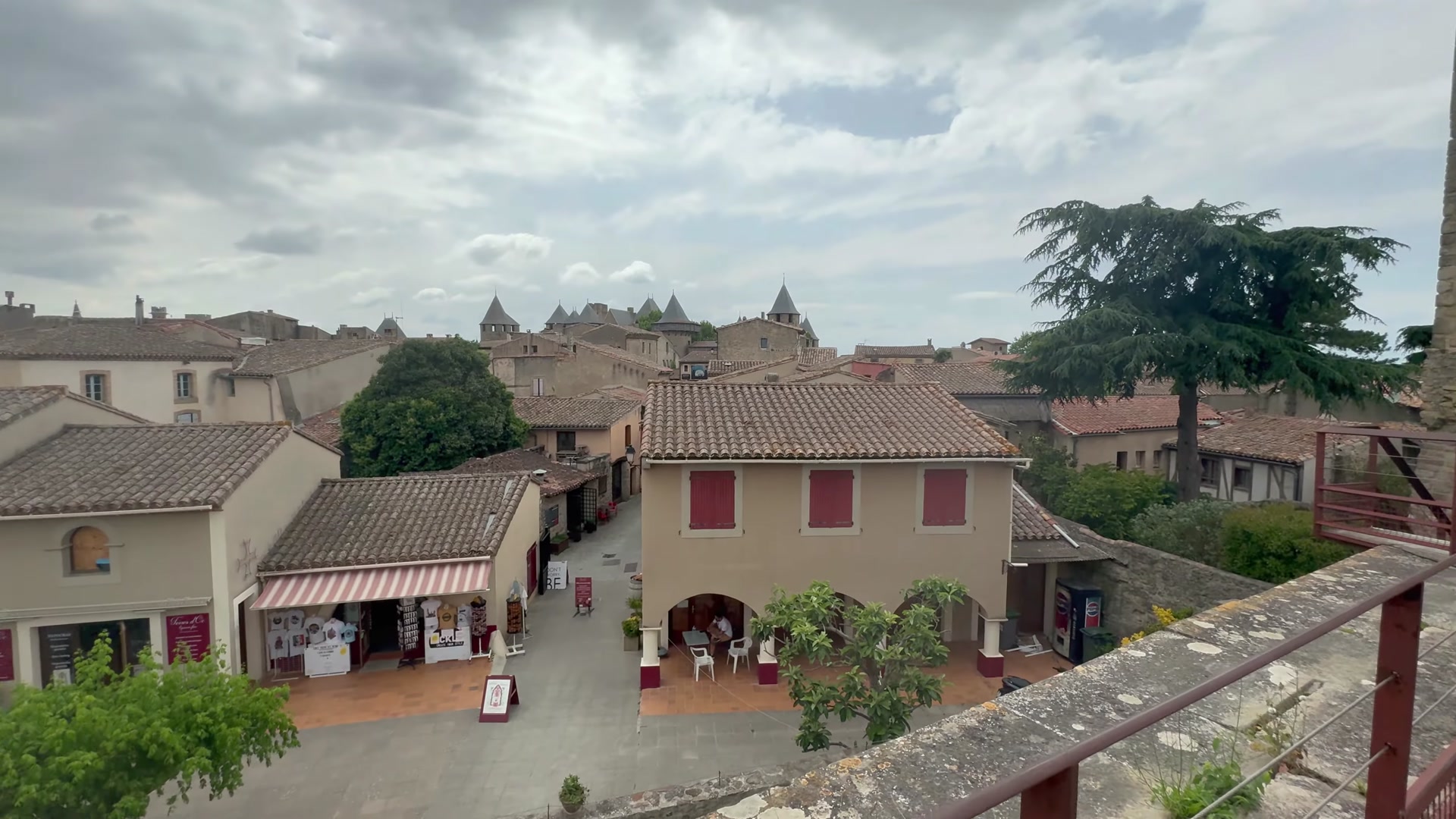
In the 10th century, the king decided to enhance the first walls and built a second layer of fortifications. This second wall is about 1700 meters long, with additions that made it easier to use defensive equipment. On the walls, green markings indicate the ancient sections built during the Roman period, while purple ones show additions from the 10th century. We were walking along the green, ancient walls.

As we continued exploring the walls, we noticed a beautiful garden in the distance that I wanted to visit. It seemed accessible since there were no signs prohibiting entry. We kept walking along the walls toward it.



However, upon reaching the garden, it appeared to be private property. Both entrances on either side were closed. From above we could look down into the garden and see a few statues. It was likely part of a nearby house, but unfortunately, we couldn’t enter.




From here, the main tower came into view as we approached the main gates. The closer we got, the more impressive the towers and corridors became. There was a wide passageway and from above, we could see the gate we had entered earlier. On the other side were shops and what looked like a few residential areas, with people going about their activities.

One of the towers is called the Treasure Tower. It is believed to have stored valuable items, which is why the tower is large and has few windows. Only treasurers were allowed inside. In the past, gold, archives and religious relics were kept here. Unfortunately, the tower isn’t open to visitors. But its structure is fascinating. Nearby gardens are charming, with French-style lounge chairs, small gardens and tables.

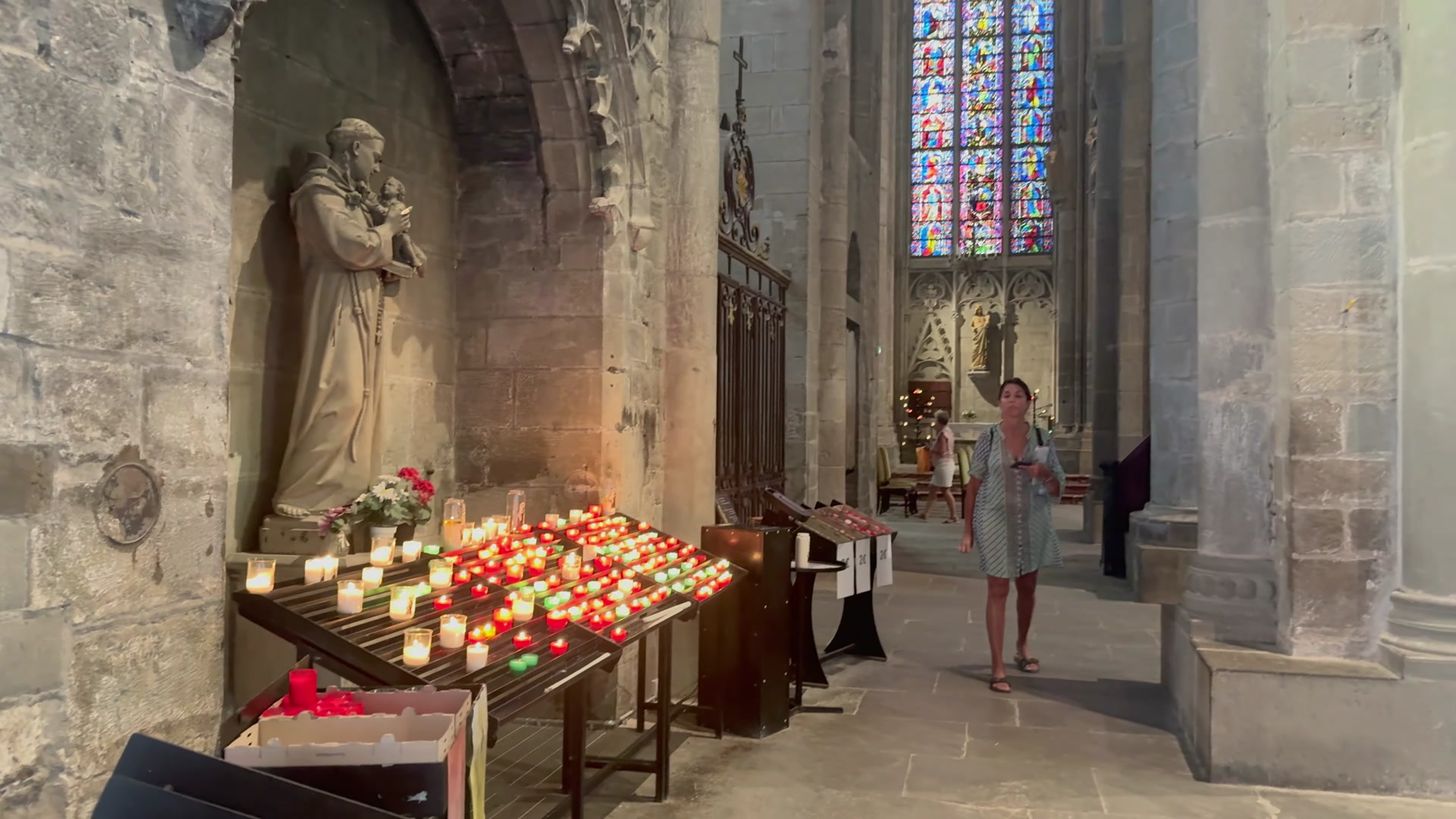

At our next stop, we learned that the Treasure Tower has five floors and housed items like gold, archives and sacred relics. It stands 30 meters tall and had fireplaces inside. Everything here was tightly secured, with minimal windows to ensure safety.

As we reached the main gate, we saw twin towers. These housed guards, servants and storage areas. Small cannons were installed to defend the gates, showing that they relied on more than just bows and arrows. Cannons evidently played a significant role in defense.

Interestingly we had climbed the walls before exploring the castle. As it turns out, visitors are supposed to tour the castle first and then explore the walls. Fortunately, an understanding staff member let us back inside without requiring us to buy another ticket. If you ever visit Carcassonne, be sure to explore the castle first. The signage is small and easy to miss.

Within the city, there’s a small museum displaying medieval statues, columns and other architectural artifacts. After leaving the castle, we visited a nearby structure that looked like a medieval cathedral. Later we arrived at a space between the first and second walls. To our right were the second walls and to our left were the main castle walls. At night this area is beautifully illuminated and the modern part of Carcassonne can be seen in the distance.

The city is iöpressive with its blend of historical and modern elements. Spending time here feels like touching history itself.
Travel Digest #2437.
Become part of our travel community:
- Join our Discord
Hiya, @ybanezkim26 here, just swinging by to let you know that this post made it into our Honorable Mentions in Your post has been manually curated by the @worldmappin team. If you like what we're doing, please drop by to check out all the rest of today's great posts and consider supporting other authors like yourself and us so we can keep the project going!Thank you
Keep up the great work 💪
Congratulations @amaras! You received the biggest smile and some love from TravelFeed! Keep up the amazing blog. 😍
Thanks for using TravelFeed!
@for91days (TravelFeed team)
PS: Did you know that we have our own Hive frontend at TravelFeed.com? For your next travel post, log in to TravelFeed with Hive Keychain or Hivesigner and take advantage of our exclusive features for travel bloggers.
Thank you
You can check out this post and your own profile on the map. Be part of the Worldmappin Community and join our Discord Channel to get in touch with other travelers, ask questions or just be updated on our latest features.
Congratulations @amaras! You have completed the following achievement on the Hive blockchain And have been rewarded with New badge(s)
Your next target is to reach 200 upvotes.
You can view your badges on your board and compare yourself to others in the Ranking
If you no longer want to receive notifications, reply to this comment with the word
STOPCongratulations, your post has been added to the TravelFeed Map! 🎉🥳🌴
Did you know you have your own profile map?
And every post has their own map too!
Want to have your post on the map too?
- Go to TravelFeed Map
- Click the create pin button
- Drag the marker to where your post should be. Zoom in if needed or use the search bar (top right).
- Copy and paste the generated code in your post (any Hive frontend)
- Or login with Hive Keychain or Hivesigner and click "create post" to post to Hive directly from TravelFeed
- Congrats, your post is now on the map!
PS: You can import your previous Pinmapple posts to the TravelFeed map.Opt Out